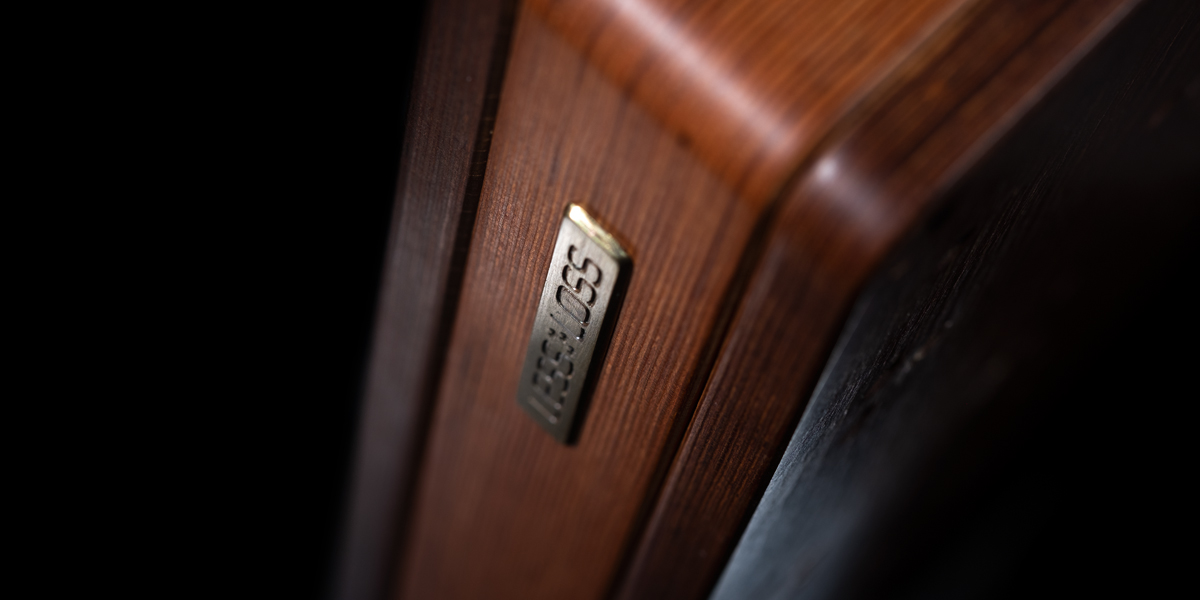LessLoss Echo’s End Original reviewed at this site more than a year ago wasn’t the only DAC in its makers’ roster. It’s time to move one step up in there and find out whether LessLoss Echo’s End Reference belongs to the same family or not, and whether it’s any good. Enjoy!
Introduction
My ongoing LessLoss history has been equally entertaining and educational. Although at first glance I saw this company’s portfolio as strongly focused on cables whilst everything else seemed exotic additives, one review at a time I’d learnt about their subjects’ distinctive behavioral pattern. Long story short, the Lithuanians’ work revolves around signal conditioning applied on all possible fronts, and each of their core products was designed to address this issue in one way or another. The more gunk is shaved off from an audio setup, the better it sounds, that’s the motto. Although it’s no news that sonic results scale up along with signal clarity, I’m aware of no other company as fanatical on this specific count as LessLoss.  Although three different LessLoss accessories reviewed here, here and here resulted in my firm understanding of their silent MO, I was hungry for more. Past detouring towards searches for the same designer team’s heftier digital hardware it quickly turned out that their entry-level Echo’s End Original DAC was filed under the ‘Analogue source’ tab for a reason. Organic, moist, earthy and very much analog-alike indeed, this machine sounded just the way I thought it would, so naturally its sibling one step above was my next target. Although similar on cosmetics and built upon the same core platform, LessLoss Echo’s End Reference sells for nearly four times as much as the Original. It seemed silly asking the manufacturer whether they managed to scale the former’s sonics significantly enough to charge accordingly. Instead I’ve asked for a loaner and that’s how this story came to be.
Although three different LessLoss accessories reviewed here, here and here resulted in my firm understanding of their silent MO, I was hungry for more. Past detouring towards searches for the same designer team’s heftier digital hardware it quickly turned out that their entry-level Echo’s End Original DAC was filed under the ‘Analogue source’ tab for a reason. Organic, moist, earthy and very much analog-alike indeed, this machine sounded just the way I thought it would, so naturally its sibling one step above was my next target. Although similar on cosmetics and built upon the same core platform, LessLoss Echo’s End Reference sells for nearly four times as much as the Original. It seemed silly asking the manufacturer whether they managed to scale the former’s sonics significantly enough to charge accordingly. Instead I’ve asked for a loaner and that’s how this story came to be.
Build
A cardboard box revealed a quality water/crush-proof flight case with precisely cut foam interior wherein the main product was perfectly secure. Usually its breed arrives with a power cord, manual and RC, but not this one and I’ll explain why in a bit. My loaner’s box also featured LessLoss’ own three Bindbreaker footers ($160 ea.), but paying customers would have to purchase these separately.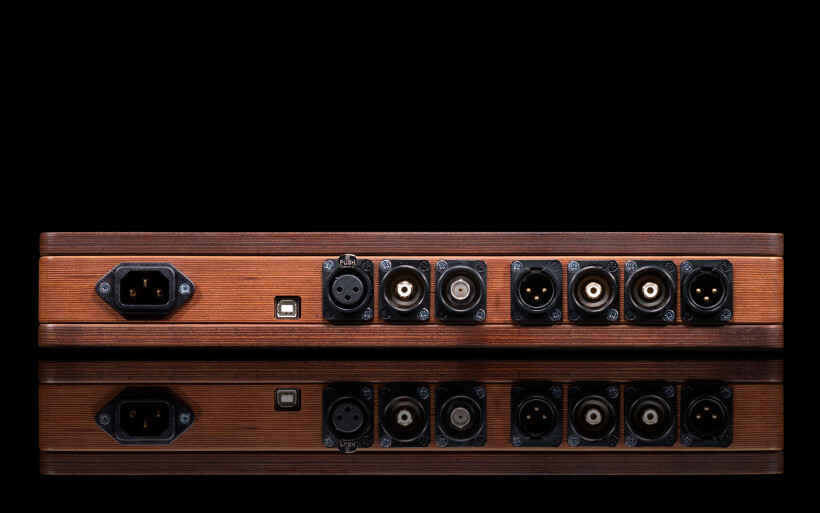 LessLoss Echo’s End Reference isn’t a regular DAC but the most minimalist hassle-free machine of this particular sort, just as the Original version before it. It measures (W x D x H) 375 x 230 x 55mm and weighs about nine kilograms, which is a breeze to handle considering its still full-sized frame. The product accepts up to 24bit/192kHz PCM and double-rate DSD (via USB), that’s it. Although my music diet includes mainly RedBooks and I couldn’t care less about anything beyond that, individuals after MQA and/or quad/octuple-rate DSD will be better off elsewhere.
LessLoss Echo’s End Reference isn’t a regular DAC but the most minimalist hassle-free machine of this particular sort, just as the Original version before it. It measures (W x D x H) 375 x 230 x 55mm and weighs about nine kilograms, which is a breeze to handle considering its still full-sized frame. The product accepts up to 24bit/192kHz PCM and double-rate DSD (via USB), that’s it. Although my music diet includes mainly RedBooks and I couldn’t care less about anything beyond that, individuals after MQA and/or quad/octuple-rate DSD will be better off elsewhere.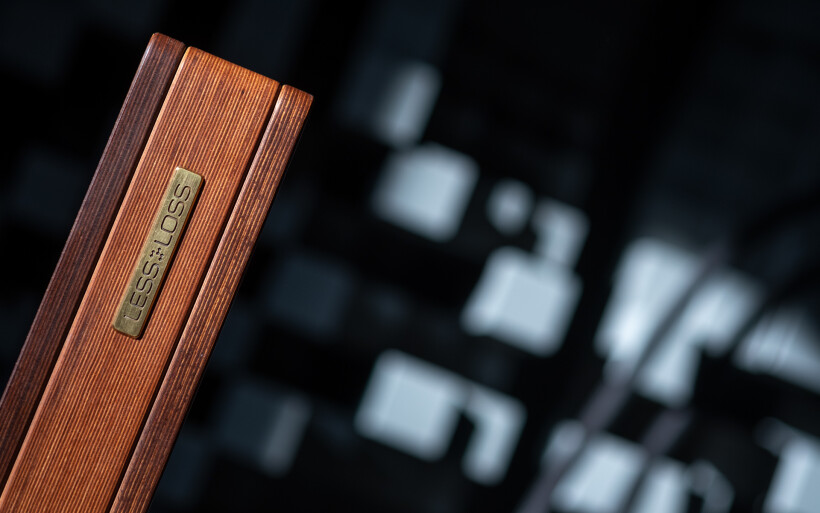 LessLoss Echo’s End Reference’s entire enclosure is made of hardwood layers glued together by phenolic resin under extreme heat and in a vacuum, known as Panzerholz. It’s strong enough to literally stop a bullet, but the Lithuanians incorporate it in their higher-tiered work due to self-damping properties far superior over Plywood and many other materials used for cabinets. Today’s wooden dress was polished by hand and impregnated with beeswax, so it actually smells like honey. By design it’s entirely free from switches, knobs, LEDs, displays etc., and even the main on/off button isn’t there. A small brass placard with the LessLoss logo on the front and laser-engraved model name on top as the only ornaments lend the Echo’s End Reference very utilitarian minimalist look and it also operates accordingly. Upon connecting a power cord it’s instantly operational and ready for input. Its business end includes the main IEC inlet, four digital auto-sensing inputs (USB, AES/EBU, coaxial S/PDIF and BNC) and two stereo pairs of line level outputs; RCA (1.4Vrms) and XLR (2Vrms). The USB in has priority over remaining ones, so upon using it the others go into standby. The way how the fully automated constantly engaged Reference DAC behaves also explains why there was no manual and RC in its package. It simply doesn’t need them and enthusiasts into products from this league already have power cables far fancier than standard throwaways.
LessLoss Echo’s End Reference’s entire enclosure is made of hardwood layers glued together by phenolic resin under extreme heat and in a vacuum, known as Panzerholz. It’s strong enough to literally stop a bullet, but the Lithuanians incorporate it in their higher-tiered work due to self-damping properties far superior over Plywood and many other materials used for cabinets. Today’s wooden dress was polished by hand and impregnated with beeswax, so it actually smells like honey. By design it’s entirely free from switches, knobs, LEDs, displays etc., and even the main on/off button isn’t there. A small brass placard with the LessLoss logo on the front and laser-engraved model name on top as the only ornaments lend the Echo’s End Reference very utilitarian minimalist look and it also operates accordingly. Upon connecting a power cord it’s instantly operational and ready for input. Its business end includes the main IEC inlet, four digital auto-sensing inputs (USB, AES/EBU, coaxial S/PDIF and BNC) and two stereo pairs of line level outputs; RCA (1.4Vrms) and XLR (2Vrms). The USB in has priority over remaining ones, so upon using it the others go into standby. The way how the fully automated constantly engaged Reference DAC behaves also explains why there was no manual and RC in its package. It simply doesn’t need them and enthusiasts into products from this league already have power cables far fancier than standard throwaways.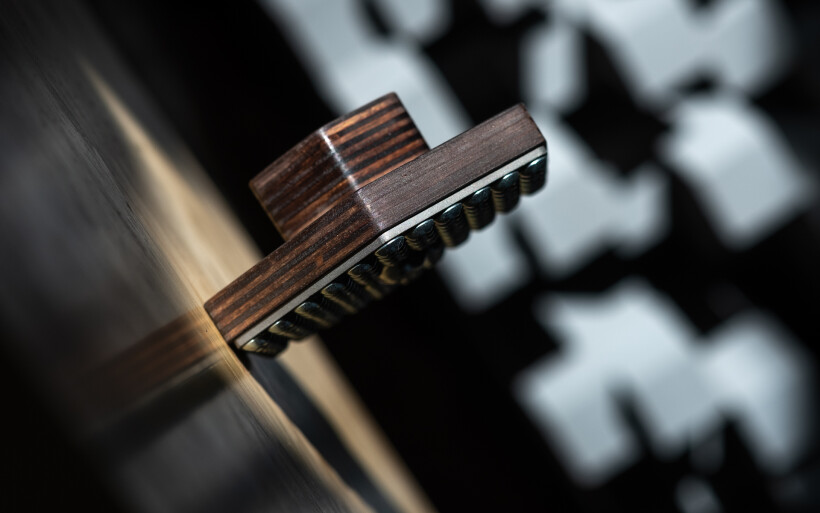 Multiple bolts that hold the product’s bonnet in place were made of the softest type steel, cherry-picked after sonic tests with their counterparts based on aluminium, Nylon and various types of stainless steel. In combination with Panzerholz it sounded better hence the decision. These bolts are electrically conductive grounding points that feature low-frequency magnetic permeability, and their black color isn’t paint and not even the industry’s standard which is the effect of oil coat burned until oxidation. Chemicals applied at room temperature are involved to achieve the blackening of the bolts and even these undergo LessLoss’ special Entropic Process.
Multiple bolts that hold the product’s bonnet in place were made of the softest type steel, cherry-picked after sonic tests with their counterparts based on aluminium, Nylon and various types of stainless steel. In combination with Panzerholz it sounded better hence the decision. These bolts are electrically conductive grounding points that feature low-frequency magnetic permeability, and their black color isn’t paint and not even the industry’s standard which is the effect of oil coat burned until oxidation. Chemicals applied at room temperature are involved to achieve the blackening of the bolts and even these undergo LessLoss’ special Entropic Process.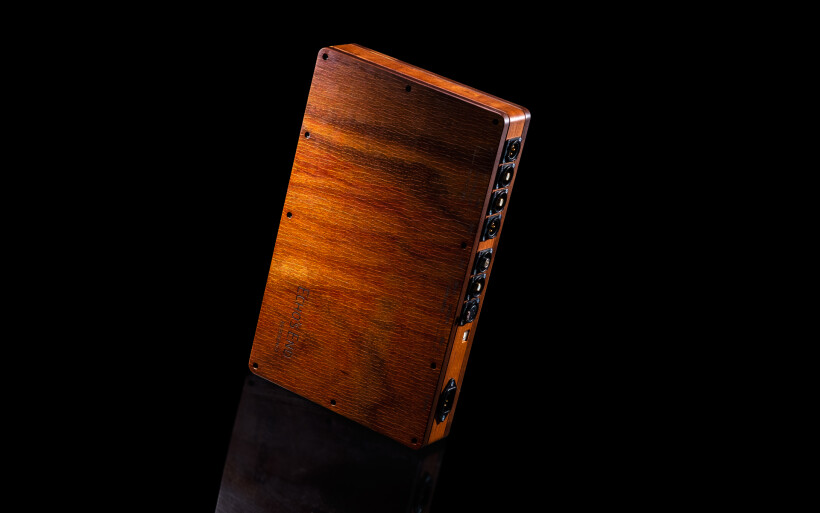 After removing all bolts on the Reference’s hood it easily came off to reveal unusual innards. A small toroidal transformer found in there was potted into a grounded carbon fiber shroud, used to efficiently reduce its self-noise and also Jitter. Amanero’s receiver handles USB. Although not unusual, two separate power supplies and dual Soekris R2R d/a boards make this review’s DAC a fully balanced affair. These circuits were reprogrammed in-house for dual mono configuration and their output buffers were bypassed. Each PCB’s right and left channel made of multiple highest available precision resistors not only converts the signal respectively in and out of phase, but also is strong enough for the Reference to get by without any output stage. Its d/a modules are directly coupled with the line outputs so they operate without tubes, op-amps, transformers, or even caps in-between, which is as purist as it is rare. Here conceptually similar also costly hardware by i.e. TotalDAC or MSB comes to mind.
After removing all bolts on the Reference’s hood it easily came off to reveal unusual innards. A small toroidal transformer found in there was potted into a grounded carbon fiber shroud, used to efficiently reduce its self-noise and also Jitter. Amanero’s receiver handles USB. Although not unusual, two separate power supplies and dual Soekris R2R d/a boards make this review’s DAC a fully balanced affair. These circuits were reprogrammed in-house for dual mono configuration and their output buffers were bypassed. Each PCB’s right and left channel made of multiple highest available precision resistors not only converts the signal respectively in and out of phase, but also is strong enough for the Reference to get by without any output stage. Its d/a modules are directly coupled with the line outputs so they operate without tubes, op-amps, transformers, or even caps in-between, which is as purist as it is rare. Here conceptually similar also costly hardware by i.e. TotalDAC or MSB comes to mind.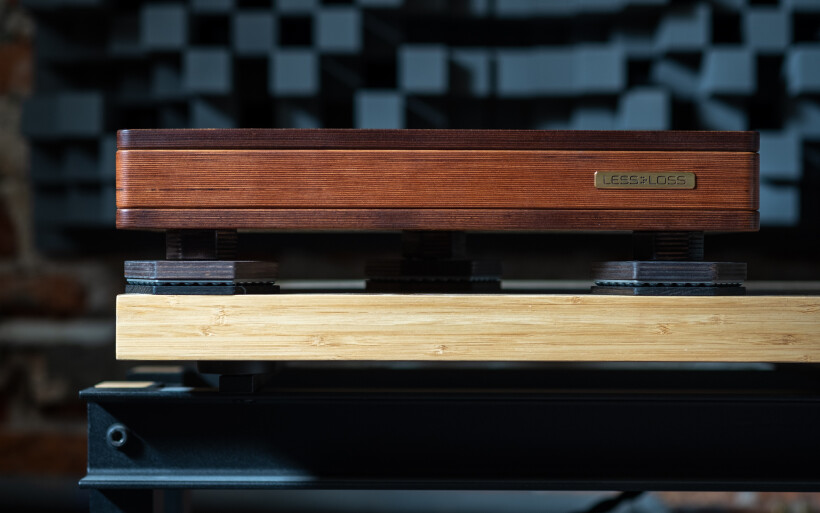 LessLoss’ engineering team also came up with their own S/PDIF-to-I2S conversion schematic, so the Soekris units inside the product receive data only via I2S powered not from USB’s 5V but a separate 3.3V line cleaned by Firewall 640X signal conditioners. Here and here I already wrote how effective these unique components are, Echo’s End Original featured three of them whilst the Reference version houses six in total. They’re strategically located at key junctions of its circuit and each small ply compartment filled with hardened resin houses two pairs of these passive filtering cylinders. All floating bolts visible inside today’s enclosure are point-to-point star grounded for further lowering internal noise reflections and this is said to result in a much more silent circuit operation. The Reference’s IEC inlet underwent a cryo treatment and features solid gold-plated copper contacts. LessLoss’ own C-MARC hook-up wire connects all power and analogue signal leads in good ‘ol point-to-point fashion.
LessLoss’ engineering team also came up with their own S/PDIF-to-I2S conversion schematic, so the Soekris units inside the product receive data only via I2S powered not from USB’s 5V but a separate 3.3V line cleaned by Firewall 640X signal conditioners. Here and here I already wrote how effective these unique components are, Echo’s End Original featured three of them whilst the Reference version houses six in total. They’re strategically located at key junctions of its circuit and each small ply compartment filled with hardened resin houses two pairs of these passive filtering cylinders. All floating bolts visible inside today’s enclosure are point-to-point star grounded for further lowering internal noise reflections and this is said to result in a much more silent circuit operation. The Reference’s IEC inlet underwent a cryo treatment and features solid gold-plated copper contacts. LessLoss’ own C-MARC hook-up wire connects all power and analogue signal leads in good ‘ol point-to-point fashion.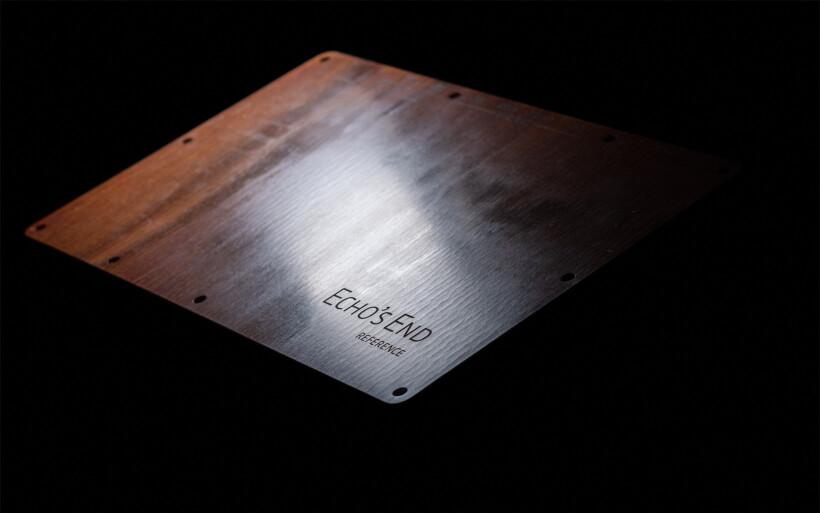 Although today’s DAC might seem at first as just a wooden box built upon several easily accessible parts and that’s that, it’s in fact the result of extensive tuning work its designers carried out. For it to operate as electrically and mechanically silently as possible, they kept only essentials but paid utmost attention to each both internally and externally. That’s key. Not only this, the Lithuanians also had to know which components and materials were spot on choices for their respective tasks and which weren’t. That’s why inside the Reference there’s minimal amount of plastic, and if there is any, it’s either clear or white. The wooden Panzerholz enclosure that efficiently limits electromagnetic reflections and tames acoustic resonances has all components and sockets directly fixed to it, and it’s also used for high energy neutron shielding in science labs. Reliable mechanical grounding has to be as quick as possible and can’t reflect anything back, which makes rubber footers and any other springy components forbidden. Soldering joints win over clamping. Colored agents constrain solder flow so all PCBs other than those by Soekris and Amanero have no mask on them. To keep resistance as low as possible, internal hook-up wire is 0.86mm2 for a mere 1.5V signal. The entire power circuitry has no traces. Instead it’s built onto 4mm2 copper rods (…also used in LessLoss’ Firewall for Loudspeakers) that undergo the Entropic Process to become completely virgin. Accordingly to the manufacturer, these bars, treated in this way never succumb to any pressures and not even once have been bent, so each can be considered a single large copper crystal free from any structural faults. All effective signal conditioners and wire technologies are critical so they are applied wherever possible throughout.
Although today’s DAC might seem at first as just a wooden box built upon several easily accessible parts and that’s that, it’s in fact the result of extensive tuning work its designers carried out. For it to operate as electrically and mechanically silently as possible, they kept only essentials but paid utmost attention to each both internally and externally. That’s key. Not only this, the Lithuanians also had to know which components and materials were spot on choices for their respective tasks and which weren’t. That’s why inside the Reference there’s minimal amount of plastic, and if there is any, it’s either clear or white. The wooden Panzerholz enclosure that efficiently limits electromagnetic reflections and tames acoustic resonances has all components and sockets directly fixed to it, and it’s also used for high energy neutron shielding in science labs. Reliable mechanical grounding has to be as quick as possible and can’t reflect anything back, which makes rubber footers and any other springy components forbidden. Soldering joints win over clamping. Colored agents constrain solder flow so all PCBs other than those by Soekris and Amanero have no mask on them. To keep resistance as low as possible, internal hook-up wire is 0.86mm2 for a mere 1.5V signal. The entire power circuitry has no traces. Instead it’s built onto 4mm2 copper rods (…also used in LessLoss’ Firewall for Loudspeakers) that undergo the Entropic Process to become completely virgin. Accordingly to the manufacturer, these bars, treated in this way never succumb to any pressures and not even once have been bent, so each can be considered a single large copper crystal free from any structural faults. All effective signal conditioners and wire technologies are critical so they are applied wherever possible throughout. 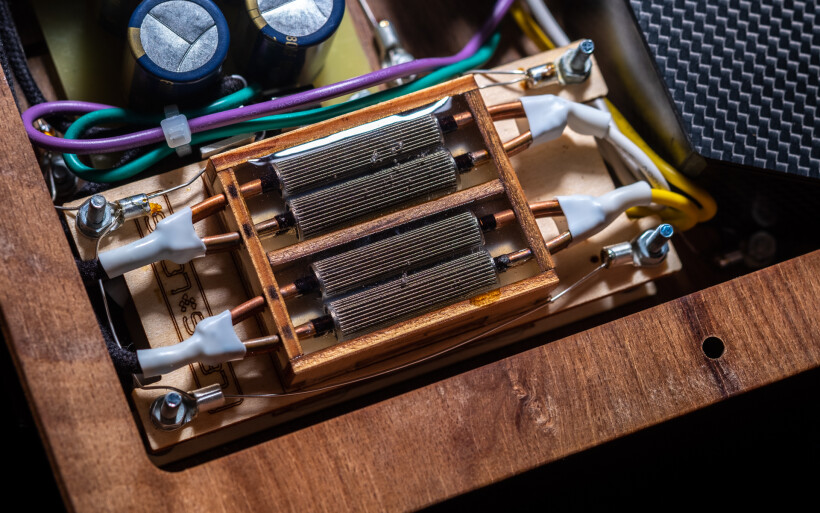 It’s very clear that Lithuanians’ non-mainstream approach renders even tiniest details as meaningful enough to optimize, unlocking potent performance scaling by summing up multiple such small things and in this way make all the difference. This designer team is also strongly convinced that less is in fact more if done right so purposely doesn’t pursue a large number of parts and fancy enclosures. That’s why their LessLoss Echo’s End Reference sits at the opposite end of trophy-fi and looks nowhere near what a $19,628 tag might suggest. Its price doesn’t reflect bling and utilities but sheer material cost, significant time it takes to prep and put everything together in-house plus all the associated know-how gleaned from decades of research in this field. This deck is aimed at customers already aware that just a modest wooden exterior loaded with select components and LessLoss’ own silencing tech can pull bonkers performance, and that’s what they’re after in the first place.
It’s very clear that Lithuanians’ non-mainstream approach renders even tiniest details as meaningful enough to optimize, unlocking potent performance scaling by summing up multiple such small things and in this way make all the difference. This designer team is also strongly convinced that less is in fact more if done right so purposely doesn’t pursue a large number of parts and fancy enclosures. That’s why their LessLoss Echo’s End Reference sits at the opposite end of trophy-fi and looks nowhere near what a $19,628 tag might suggest. Its price doesn’t reflect bling and utilities but sheer material cost, significant time it takes to prep and put everything together in-house plus all the associated know-how gleaned from decades of research in this field. This deck is aimed at customers already aware that just a modest wooden exterior loaded with select components and LessLoss’ own silencing tech can pull bonkers performance, and that’s what they’re after in the first place.
Sound
The Innuos Statement loaner handled storage/transport, then either a LampizatOr Pacific DAC (KR Audio T-100/Living Voice 300B + KR Audio 5U4G Ltd. Ed.) or LessLoss Echo’s End Reference with three Bindbreaker feet underneath passed signal to a Trilogy 915R/995R set that connected via a Boenicke Audio S3 speaker cable to either sound|kaos Vox 3afw monitors or Boenicke W11 SE+ floorstanders. Interconnects used were Boenicke Audio IC3 CG and XLRs which I proudly DIY-ed. All key hardware was powered by Boenicke Audio Power Gate distributor box plus its three captive M2 cords and two LessLoss C-MARCs. The USB chain included only iFi audio’s Mercury3.0 USB cable. A set of external LessLoss Firewall for Loudspeakers modules complimented both speaker sets, while a Fidelizer EtherStream was in-between my Linksys WRT160N router and Innuos Statement server. A GigaWatt PC-3 SE EVO+ power conditioner fronted by its own LC-3 EVO cable fed PSUs for the router and network switch.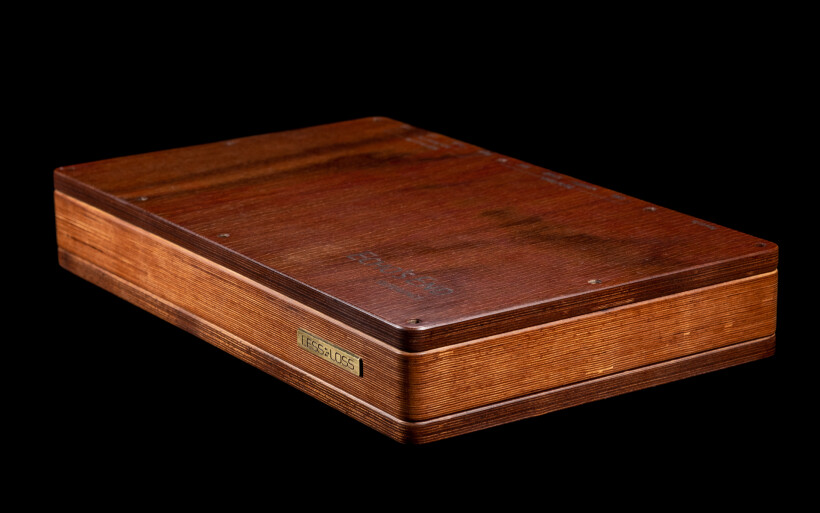 At first I had to find a way how to make this report’s battle even-handed. Both DACs connected to the Boenicke Audio Power Gate bar via its captive M2 cords and that was a good start. Two Audiomica Laboratory Erys Excellence RCA sets married both contestants to the Trilogy 915R’s inputs. Although this seemed the right thing to do for the sake of maintaining equal conditions, I felt that both devices were too handicapped by these interconnects. Besides, the Pacific’s single-ended circuit and the Echo’s End Reference’s fully balanced internals also had to be taken into account, so the former went into the 915R via the far better Boenicke IC3 CG ICs and the XLRs I DIY-ed fronted the latter. That way my reference DAC had the advantage of a fancy cable, and its opponent from LessLoss operated as a fully balanced machine that matched my Trilogy set’s also balanced topology. The Pacific’s line outputs provided the same signal voltage as the LessLoss’ XLR outs, so I didn’t even need to level match them. One quick convenient USB cable swap and an input change on my preamp were the only things I had to do to switch from one DAC to the other.
At first I had to find a way how to make this report’s battle even-handed. Both DACs connected to the Boenicke Audio Power Gate bar via its captive M2 cords and that was a good start. Two Audiomica Laboratory Erys Excellence RCA sets married both contestants to the Trilogy 915R’s inputs. Although this seemed the right thing to do for the sake of maintaining equal conditions, I felt that both devices were too handicapped by these interconnects. Besides, the Pacific’s single-ended circuit and the Echo’s End Reference’s fully balanced internals also had to be taken into account, so the former went into the 915R via the far better Boenicke IC3 CG ICs and the XLRs I DIY-ed fronted the latter. That way my reference DAC had the advantage of a fancy cable, and its opponent from LessLoss operated as a fully balanced machine that matched my Trilogy set’s also balanced topology. The Pacific’s line outputs provided the same signal voltage as the LessLoss’ XLR outs, so I didn’t even need to level match them. One quick convenient USB cable swap and an input change on my preamp were the only things I had to do to switch from one DAC to the other.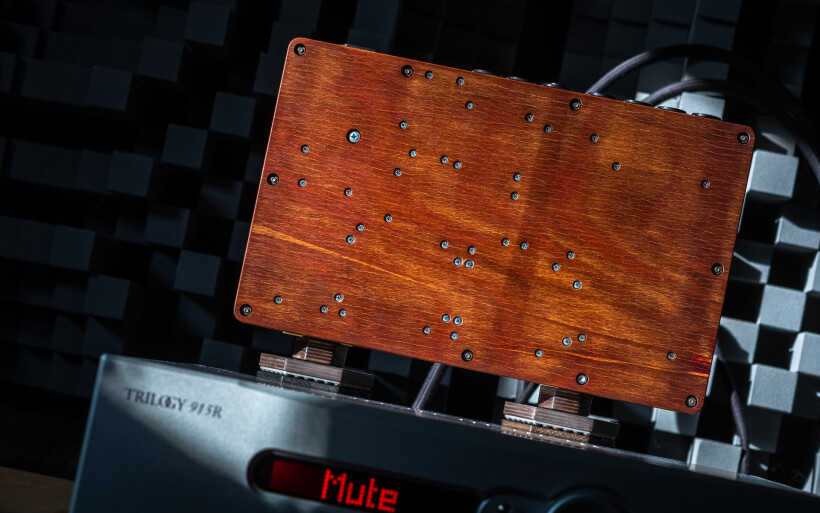 In my previous review of the LessLoss Echo’s End Original I mapped its sonic character as more grounded, rounder and clearly milder versus my daily driver, but neither bloated nor slower on bass. Instead of pursuing resolution and insight, that LessLoss brought to my attention its background blackness, general politeness, the musical tissue and that particular well-known moist sensation my ears accommodate to very quickly. Although all key traits of both products were as clear as they were understandable, I had no withdrawal symptoms after switching from my far dearer DAC to the Lithuanian. Music presented in effortless, fluent and organic fashion emerged as the Original’s highly valuable key attractor, but additionally augmented via generously euphonic expressiveness and enjoyable freedom from digital tint and harshness, which back then I took as its very much vinyl-like charm.
In my previous review of the LessLoss Echo’s End Original I mapped its sonic character as more grounded, rounder and clearly milder versus my daily driver, but neither bloated nor slower on bass. Instead of pursuing resolution and insight, that LessLoss brought to my attention its background blackness, general politeness, the musical tissue and that particular well-known moist sensation my ears accommodate to very quickly. Although all key traits of both products were as clear as they were understandable, I had no withdrawal symptoms after switching from my far dearer DAC to the Lithuanian. Music presented in effortless, fluent and organic fashion emerged as the Original’s highly valuable key attractor, but additionally augmented via generously euphonic expressiveness and enjoyable freedom from digital tint and harshness, which back then I took as its very much vinyl-like charm.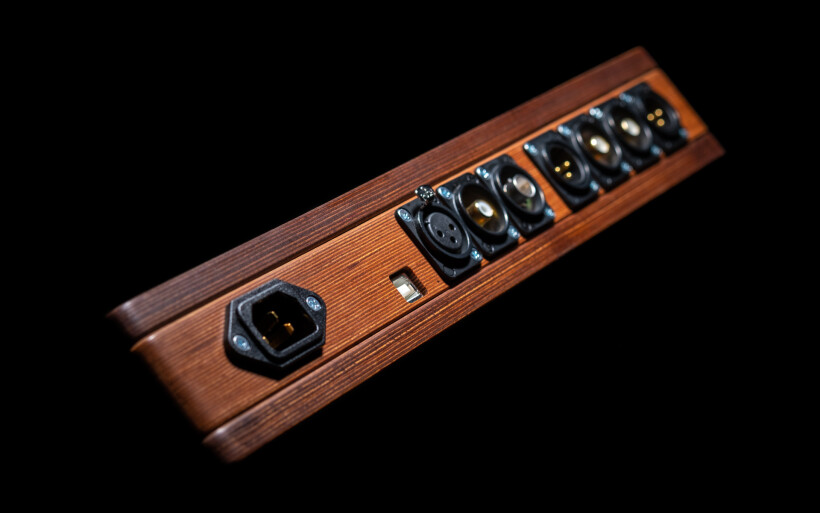 Although the Original DAC clearly didn’t play in the premier resolution league, it swiftly avoided excessive fat and warmth often associated with similarly voiced products, so it didn’t feel veiled and unclear. Its performance wasn’t overly thick, sluggish or bloated, but pleasantly earthy, organic and along the lines of what vintage top class d/a converters infused with i.e. PCM1704 chips used to pull. Although more substantial and grounded at its core, the Echo’s End’s core flavor wasn’t second-grade versus my crispier leaner Pacific but a vastly different aroma above all else. It was emotionally engaging and focused on quality, sensuality and maturity instead of quantity, exposure and abnormal twitchiness, which led to a fatigue-free pleasurable ride. The Original always felt pleasantly gravitational and cohesive but never overdone or extreme in any way.
Although the Original DAC clearly didn’t play in the premier resolution league, it swiftly avoided excessive fat and warmth often associated with similarly voiced products, so it didn’t feel veiled and unclear. Its performance wasn’t overly thick, sluggish or bloated, but pleasantly earthy, organic and along the lines of what vintage top class d/a converters infused with i.e. PCM1704 chips used to pull. Although more substantial and grounded at its core, the Echo’s End’s core flavor wasn’t second-grade versus my crispier leaner Pacific but a vastly different aroma above all else. It was emotionally engaging and focused on quality, sensuality and maturity instead of quantity, exposure and abnormal twitchiness, which led to a fatigue-free pleasurable ride. The Original always felt pleasantly gravitational and cohesive but never overdone or extreme in any way.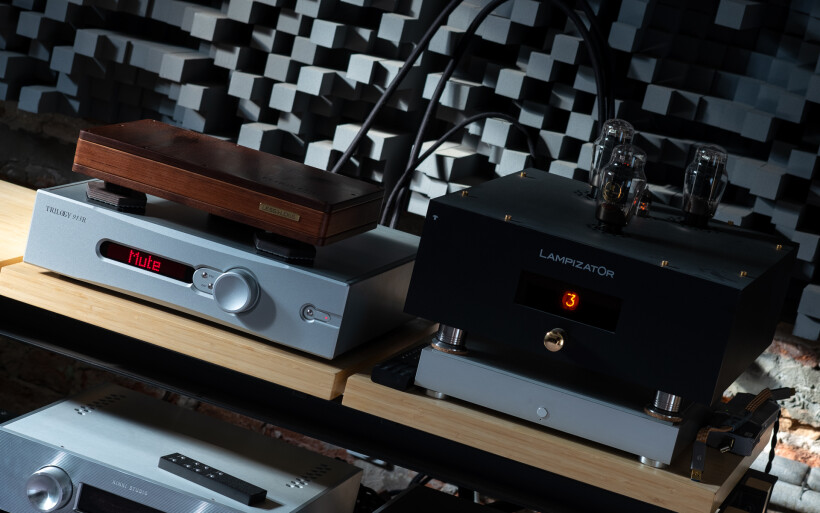 Although the Pacific had emerged as the more agile, open, insightful, sculpted, accurate, immediate and direct specimen of the two, the differently profiled Echo’s End’s Original’s lesser score on speed and magnification prowess wasn’t bothersome at all. It projected all key virtual sound sources softer, fixed deeper and not as visibly distinctive versus its Polish opponent, but its enchanting, calm, euphonic and composed voice was free from fuzz and dilution, and also agile enough to feel dynamically gifted to accordingly boost its expressive backbone. Yes, the Pacific sounded more boldly, quick, fresh and ripped indeed, however the Lithuanian entry-level DAC in faithful service of tone also was respectably muscular, coherent and tight. It surely wasn’t a one-trick pony.
Although the Pacific had emerged as the more agile, open, insightful, sculpted, accurate, immediate and direct specimen of the two, the differently profiled Echo’s End’s Original’s lesser score on speed and magnification prowess wasn’t bothersome at all. It projected all key virtual sound sources softer, fixed deeper and not as visibly distinctive versus its Polish opponent, but its enchanting, calm, euphonic and composed voice was free from fuzz and dilution, and also agile enough to feel dynamically gifted to accordingly boost its expressive backbone. Yes, the Pacific sounded more boldly, quick, fresh and ripped indeed, however the Lithuanian entry-level DAC in faithful service of tone also was respectably muscular, coherent and tight. It surely wasn’t a one-trick pony.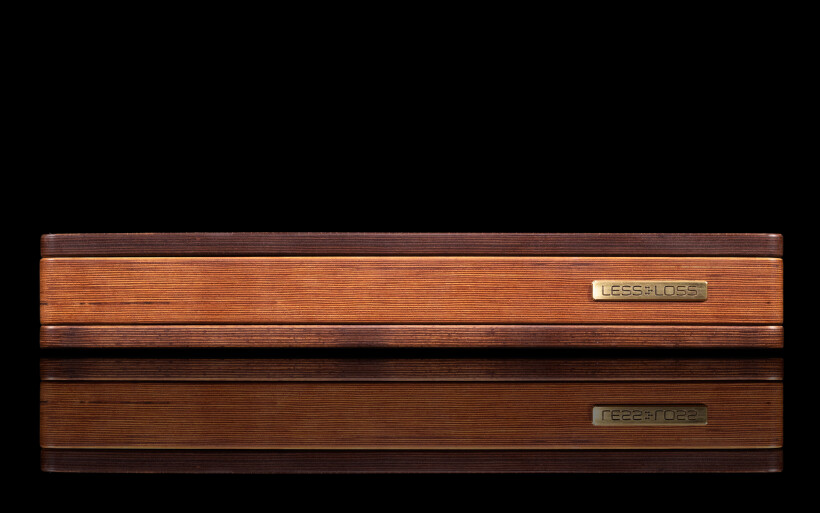 The LessLoss Echo’s End Original’s fetchingly dark, substantial, smooth, saturated, easily digestible and elegant disposition was to my ears somewhere in-between Trilogy’s meaty 925 integrated and sportier 993/903 siblings, whereas the Pacific I remarked back then as the Trilogy’s top shelf 915R/995R set. Speaking audio formats and speakers, the latter DAC’s attitude was fit for hi-res PCM and open baffles, whereas the bloomy, sweet and mild former was more a DSD-type that behaved like a ported box loaded with smaller drivers. But more importantly, the Lithuanian’s gearing towards tastefully executed pleasant undisturbed music flow and not its informational load left thinking about any potential sonic improvements at the door. What it did during that review session was simply too vivid, seasoned, coherent and pleasant to bother.
The LessLoss Echo’s End Original’s fetchingly dark, substantial, smooth, saturated, easily digestible and elegant disposition was to my ears somewhere in-between Trilogy’s meaty 925 integrated and sportier 993/903 siblings, whereas the Pacific I remarked back then as the Trilogy’s top shelf 915R/995R set. Speaking audio formats and speakers, the latter DAC’s attitude was fit for hi-res PCM and open baffles, whereas the bloomy, sweet and mild former was more a DSD-type that behaved like a ported box loaded with smaller drivers. But more importantly, the Lithuanian’s gearing towards tastefully executed pleasant undisturbed music flow and not its informational load left thinking about any potential sonic improvements at the door. What it did during that review session was simply too vivid, seasoned, coherent and pleasant to bother.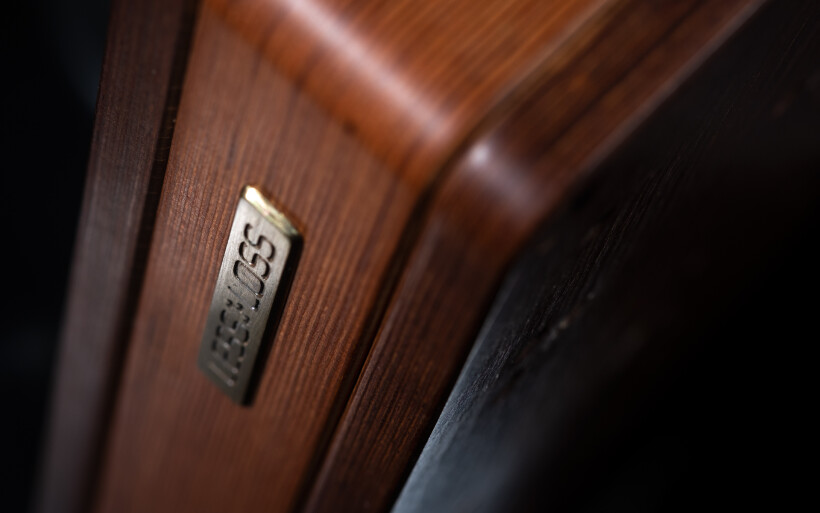 If you’re now wondering why this long-drawn chapter was all about the Echo’s End Original and not its Reference sibling, they’re profiled similarly and considering their internals that’s hardly a coincidence. But there’s far more to the latter’s own action doing than its similarly modest wooden visual might imply. Its already very much analog-alike sonic spine features supportive tissue tailored for a particular set of traits its predecessor didn’t have. These extra muscles effectively position today’s DAC far higher on counts relevant not to expressiveness or charm but sheer power, RPM, elasticity and insight. Speaking cars, think of this product as a large safe SUV that just underwent a major engine rework to net twice the horsepower. The ride’s as comfy as ever, but now that sleeper disguised as a family drive can do 0-60 times fast enough to leave many sporty sedans in the rear-view mirror. That’s this report’s main jist.
If you’re now wondering why this long-drawn chapter was all about the Echo’s End Original and not its Reference sibling, they’re profiled similarly and considering their internals that’s hardly a coincidence. But there’s far more to the latter’s own action doing than its similarly modest wooden visual might imply. Its already very much analog-alike sonic spine features supportive tissue tailored for a particular set of traits its predecessor didn’t have. These extra muscles effectively position today’s DAC far higher on counts relevant not to expressiveness or charm but sheer power, RPM, elasticity and insight. Speaking cars, think of this product as a large safe SUV that just underwent a major engine rework to net twice the horsepower. The ride’s as comfy as ever, but now that sleeper disguised as a family drive can do 0-60 times fast enough to leave many sporty sedans in the rear-view mirror. That’s this report’s main jist.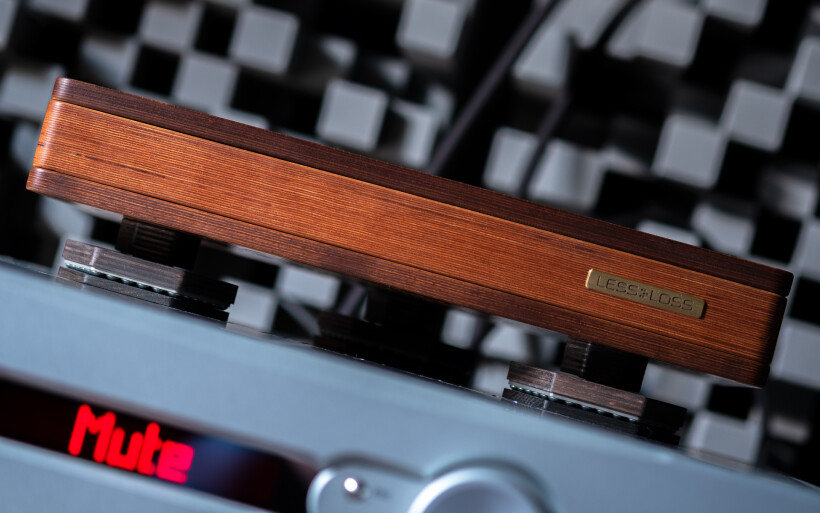 Naturally the above-mentioned engine swap stands for all measures that the team LessLoss had to include inside their Reference model to i.e. make it go faster, but how the following raw power increase manifested itself was highly interesting. Although the LessLoss still felt darker and more distant versus its Polish opponent, it had all the authority to render feisty bits on my playlist just as effortlessly. On this specific count the game was even-Steven. The Lithuanian was very capable on bass reach and control, but also managed to inject extra weight and roundness into this range without penalizing its agility or might, and that’s the key feature to take note of. This DAC knew well how to charm and slam at the same time, and that’s one of main reasons why I see it as substantially more composed and clearly better versus the Echo’s End Original.
Naturally the above-mentioned engine swap stands for all measures that the team LessLoss had to include inside their Reference model to i.e. make it go faster, but how the following raw power increase manifested itself was highly interesting. Although the LessLoss still felt darker and more distant versus its Polish opponent, it had all the authority to render feisty bits on my playlist just as effortlessly. On this specific count the game was even-Steven. The Lithuanian was very capable on bass reach and control, but also managed to inject extra weight and roundness into this range without penalizing its agility or might, and that’s the key feature to take note of. This DAC knew well how to charm and slam at the same time, and that’s one of main reasons why I see it as substantially more composed and clearly better versus the Echo’s End Original.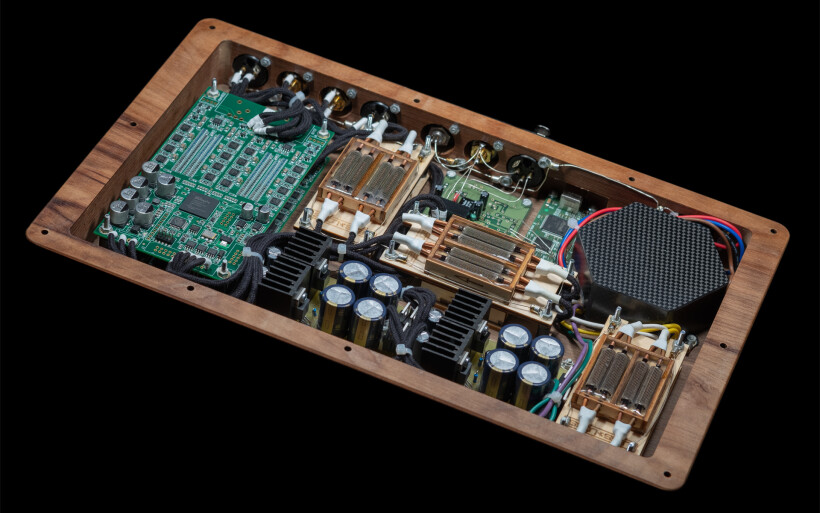 The more mileage both the Pacific and Echo’s End Reference had, the more I felt that this time around the fight didn’t include two differently tiered devices and one technically better, but specimens equally sorted on fundamentals that had their priorities allocated quite differently. My inherently resolving and lit up Pacific was still the more immediate and tangible of the two. It projected larger more firmly outlined shapes and brought them closer to feel more ethereal, nimble, speedier, airier, direct and here. The Echo’s End Reference rendered virtual sources inside smaller more distant frames, was a fair bit denser and had its backdrop darker to elevate ambience, to accordingly feel more atmospheric and invite me there to its own place. That’s the rough guideline. The Pacific’s high notes were always sensible and magnified, whereas the LessLoss had them suspended about a row deeper yet pleasantly substantial, lingering in air for long and all the while perfectly visibly, which was quite the achievement considering its natural aspiration for chocolaty flavor. On on-stage sizing, complexity and accuracy there was a draw, ditto smoothness, lack of any grain and overall ease of delivery.
The more mileage both the Pacific and Echo’s End Reference had, the more I felt that this time around the fight didn’t include two differently tiered devices and one technically better, but specimens equally sorted on fundamentals that had their priorities allocated quite differently. My inherently resolving and lit up Pacific was still the more immediate and tangible of the two. It projected larger more firmly outlined shapes and brought them closer to feel more ethereal, nimble, speedier, airier, direct and here. The Echo’s End Reference rendered virtual sources inside smaller more distant frames, was a fair bit denser and had its backdrop darker to elevate ambience, to accordingly feel more atmospheric and invite me there to its own place. That’s the rough guideline. The Pacific’s high notes were always sensible and magnified, whereas the LessLoss had them suspended about a row deeper yet pleasantly substantial, lingering in air for long and all the while perfectly visibly, which was quite the achievement considering its natural aspiration for chocolaty flavor. On on-stage sizing, complexity and accuracy there was a draw, ditto smoothness, lack of any grain and overall ease of delivery. It seems fair to simplify and label the Pacific as the more fresh, young, keen, direct and impactful product versus the more sedate, mature, calmer and picturesque Echo’s End Reference. Still, these two DACs operated at a tier too high to call them out on any obvious weakness. One’s trait wasn’t the other’s downside, both had their basics down to a tee and each took an opposite direction from there. But since this is the story about this Lithuanian DAC, it caught me off guard by how accurately and clearly it portrayed each virtual sculpture in spite of its naturally grounded somewhat darkish disposition. That was new. Clarity, accuracy, tonal generosity and substance are traits that don’t usually match in equal proportions, let alone having them all this pronounced. Neither the Echo’s End Original, nor AMR DP-777SE, Lampizator Golden Gate or any other DAC I’m aware of managed to blend all these features just the way today’s Reference specimen did. I strongly think that its ability to do so this potently and have bass in check to slam hard upon demand is its highest most unique trait. After all, how often do we get to hear a naturally earthy d/a machine that’s also very capable on articulation and dynamic might?
It seems fair to simplify and label the Pacific as the more fresh, young, keen, direct and impactful product versus the more sedate, mature, calmer and picturesque Echo’s End Reference. Still, these two DACs operated at a tier too high to call them out on any obvious weakness. One’s trait wasn’t the other’s downside, both had their basics down to a tee and each took an opposite direction from there. But since this is the story about this Lithuanian DAC, it caught me off guard by how accurately and clearly it portrayed each virtual sculpture in spite of its naturally grounded somewhat darkish disposition. That was new. Clarity, accuracy, tonal generosity and substance are traits that don’t usually match in equal proportions, let alone having them all this pronounced. Neither the Echo’s End Original, nor AMR DP-777SE, Lampizator Golden Gate or any other DAC I’m aware of managed to blend all these features just the way today’s Reference specimen did. I strongly think that its ability to do so this potently and have bass in check to slam hard upon demand is its highest most unique trait. After all, how often do we get to hear a naturally earthy d/a machine that’s also very capable on articulation and dynamic might?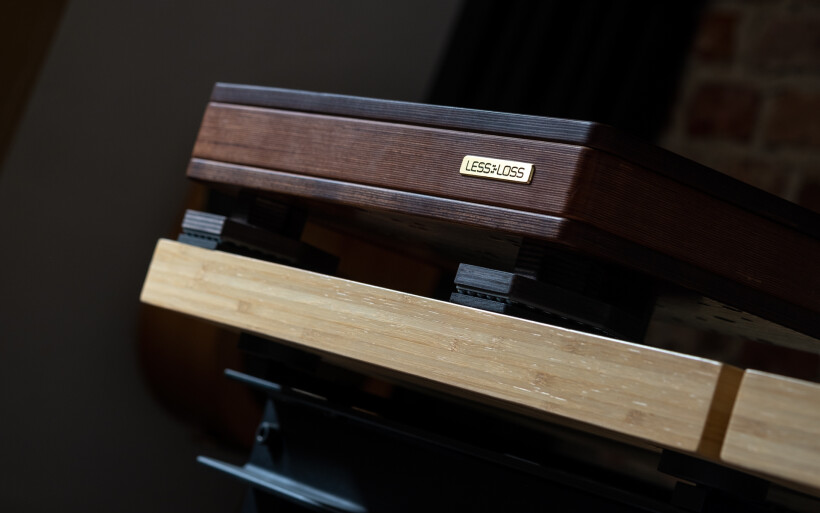 Come to think of it, I shouldn’t be surprised. The Echo’s End Reference’s skillset is the effect of extreme silencing measures its makers pursued, which is exactly what one pays for to achieve this type of sonic distinctiveness and valor. Although this DAC is the most analog type of its kind I’m aware of, it has a very strong personality of its own and is more situational than my still costlier daily driver. Having said this, the former will be a perfect fit for setups geared towards illumination, oxygenation, spatial grandeur, zippiness, speed, openness and the lot. But audio rigs favoring chunk, gravity, oomph etc. will appreciate more a DAC voiced just as mine. This hobby is more about balance than anything else, and whether your system would benefit from one this report’s contestant or the other is beyond my pay grade. It’s up to your ears to figure this one out, so let’s wrap.
Come to think of it, I shouldn’t be surprised. The Echo’s End Reference’s skillset is the effect of extreme silencing measures its makers pursued, which is exactly what one pays for to achieve this type of sonic distinctiveness and valor. Although this DAC is the most analog type of its kind I’m aware of, it has a very strong personality of its own and is more situational than my still costlier daily driver. Having said this, the former will be a perfect fit for setups geared towards illumination, oxygenation, spatial grandeur, zippiness, speed, openness and the lot. But audio rigs favoring chunk, gravity, oomph etc. will appreciate more a DAC voiced just as mine. This hobby is more about balance than anything else, and whether your system would benefit from one this report’s contestant or the other is beyond my pay grade. It’s up to your ears to figure this one out, so let’s wrap.
Summary
Highly potent noise-rejecting measures inside the LessLoss Echo’s End Original resulted in its distinctively silent earthy sonic flavor. Now that DAC’s nearly four times costlier sibling infused with more of the same tech and then some revealed itself as alike-voiced, but also more accomplished and tiered substantially higher where it matters most.
LessLoss Echo’s End Original was already a rather modest looking unit for its ask, which turns this report’s Reference version into quite a more extreme proposition on this front, but their makers never were after needless functionality and bling. In pursuit of noise reduction these Lithuanians purposely go basic to discard aluminium, LEDs, knobs, switches, fuses etc., recognized as obvious culprits that decrease sound quality. Their mid-tiered purist DAC reflects this unique approach as accurately as its predecessor, so it needs only critical cherry-picked components, LessLoss’ own in-house developed clever measures and lots of assembly hours to perform just the way it does. Whether you’re okay with such design philosophy or not is up to you, but considering how today’s enjoyably compact plug’n’play affair performs, I know I truly am.
Those quick to judge LessLoss Echo’s End Reference by its petite wooden dress code and commonly available affordable internal d/a boards will dearly miss the big picture. This DAC’s target audience already understands its makers’ design choices instead of questioning them. Such enthusiasts look beyond sheer parts costs, fancy exteriors, displays and any other modern sexiness, but want to inject that particularly captivating sonic moisture, elegance and maturity into their setups without compromising on clarity and agility. If you fit that profile and financially can swing it, then the LessLoss Echo’s End Reference might be the last DAC you’ll ever buy. ‘Til next time!
Associated Equipment:
- Amplifier: Trilogy 995R
- DAC: LampizatOr Pacific (KR Audio T-100 / Living Voice 300B + KR Audio 5U4G Ltd. Ed.)
- Speakers: Boenicke Audio W11 SE+, sound|kaos Vox 3afw
- Transport: Innuos Statement
- Preamplifier: Trilogy 915R
- Speaker cables: Boenicke Audio S3, LessLoss C-MARC
- Speaker signal conditioning: LessLoss Firewall for Loudspeakers
- Interconnects: Boenicke Audio IC3 CG
- Power components: Gigawatt PC-3 SE EVO+/LC-3 EVO, LessLoss C-MARC, Boenicke Audio Power Gate
- USB components: iFi audio iGalvanic3.0, iFi audio micro iUSB3.0, 3x iFi audio Mercury3.0, iPower 9V
- Rack: Franc Audio Accesories Wood Block Rack
- Network: Fidelizer EtherStream, Linksys WRT160N
- Music: NativeDSD
Retail prices of reviewed components in EU (excl. tax):
- LessLoss Echo’s End Reference: $19,628
Manufacturer: LessLoss


